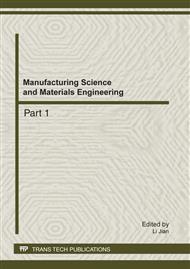p.569
p.576
p.583
p.589
p.594
p.601
p.607
p.612
p.617
Effect of Cycles and Ion-Exchange on the Purification of Lithium Carbonate
Abstract:
In this study, high-purity Li2CO3 was prepared by carbonation-decomposition and ion-exchange methods using the industrial-grade lithium carbonate, and the effect of cycles and ion-exchange of the mother liquor on purification was investigated. Results showed that the process of cycles can improve the purity and productivity of Li2CO3. The impurities (such as K, Na, Ca and Mg) could be removed in the process. The purity of product decreased and the impurity contents increased after 4 cycles. At the same time, the ion-exchange process by D412 resin was used to deeply remove the residual Ca and Mg after the simple carbonation-decomposition and cycle process. The comparison of different flowing speed of solution through the ion-exchange resin indicated that the low flowing speed was beneficial for the deep removal of the Ca and Mg. considering the problem of efficiency, the flowing speed of 10-20 ml/min was appropriate. The high purity and productivity of Li2CO3 indicated that the carbonation-decomposition method combining with the mother liquor cycles and ion-exchange method has a good perspective in the field of lithium carbonate purification.
Info:
Periodical:
Pages:
594-600
Citation:
Online since:
January 2012
Authors:
Keywords:
Price:
Сopyright:
© 2012 Trans Tech Publications Ltd. All Rights Reserved
Share:
Citation:


